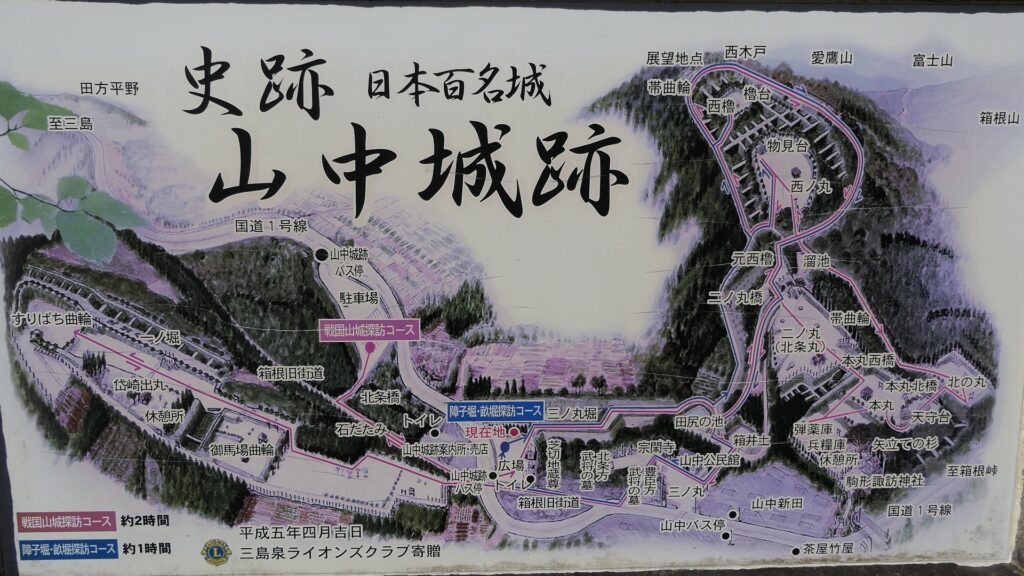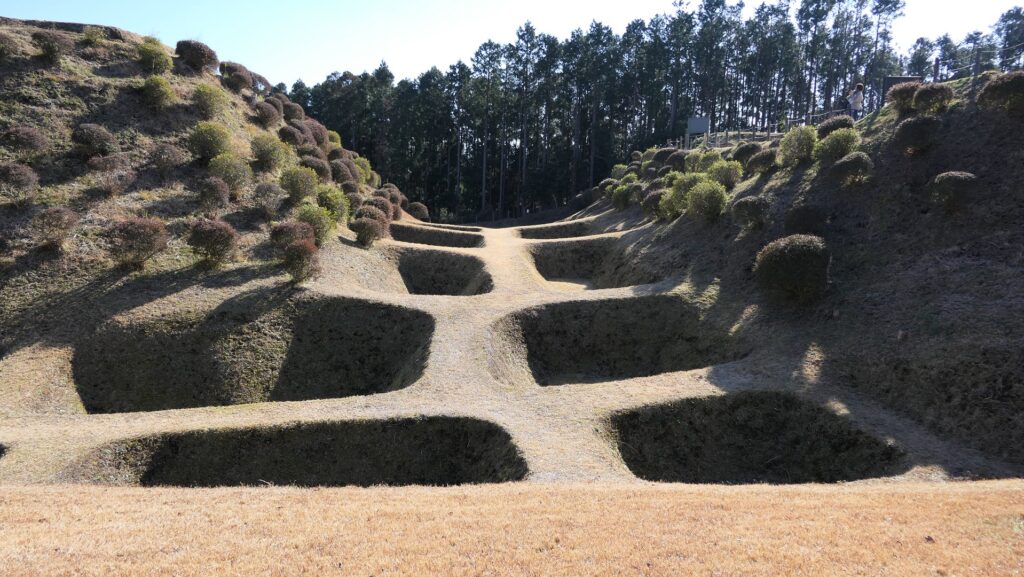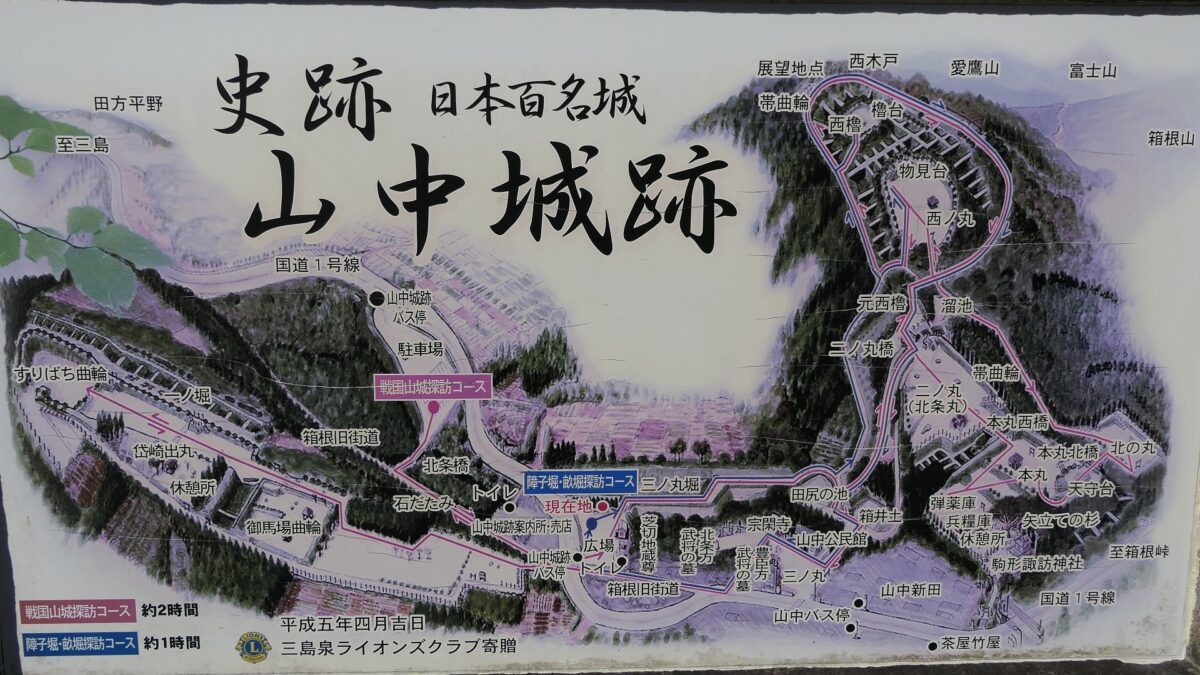Location and History
Western Defense for Hojo Clan
Yamanaka Castle was located on the west of Hakone Barrier, the western gateway of Kanto Region, now in the eastern part of Shizuoka Prefecture. The castle was first built in the middle 16th Century during the Sengoku Period by the Hojo Clan, who owned Kanto Region. The clan aimed to protect their home base, Odawara Castle on the eastern side of Hakone Barrier, by building Yamanaka Castle. This castle was also improved before the ruler, Hideyoshi Toyotomi, attacked the Hojo Clan in 1590.
The location of the castleYamanaka Castle was built surrounding the Tokaido Road, one of the major roads in Japan. During that time, if someone walked up the slope on the road from the west, it would require passing through the castle. The road was actually on the Third Enclosures of the castle, and beside the Main Enclosure. The Third Enclosure also had water moats on the west to prevent enemies’ attacks and was for the water reservoir.
On the south of the Third Enclosure, a long defense strongpoint called “Taizaki-demaru” spread with the road parallelly. On the west of the Third Enclosure, the Second Enclosure, the West Enclosure, and the West Turret were added towards that direction. These enclosures were able to work closely to prevent attacks from enemy forces.

Hojo’s Unique Methods for building Castle
The techniques used in the castle were unique to the Hojo Clan. All the enclosures were made of earthworks, using natural terrain such as ridges and valleys. They were mainly connected by wooden bridges which could fall down when a battle happened. They were also divided by deep dry moats whose bottoms were left parallel or as latticed ridges. The method for building the moats is called “Une-bori” for the parallel ridges and “Shoji-bori” for the latticed ridges. These dry moat building methods are considered features of the Hojo’s castles. Once soldiers fell into the moat, they couldn’t move from there at all. The area of the castle reached about 200,000 square meters. Hojo thought the castle could make Hideyoshi stuck for a while.


Fall in Battle of Yamanaka Castle
However, the castle was captured by Hideyoshi in just half a day. In the early morning, March 29, 1590, nearly 70,000 soldiers of Hideyoshi’s troop started to attack the castle, while the number of the defenders was only about 4,000. The attackers first charged both the West Turret and the Taizaki-Demaru defense strongpoint, but they suffered a significant number of casualties by the counterattack of Hojo’s guns. If it was a local battle, the attacker might have paused the charge to prevent more damages. However, the commanders forcibly continued to charge, otherwise, they might have been fired by the ruler. That resulted in the success of capturing the castle for Hideyoshi in exchange for a lot of dead soldiers including one of the Hideyoshi’s commander, Naosue Hitotsuyanagi.

This battle lasted for a few hours. It is said that another reason for the short battle was that Hojo’s soldiers were confused because their head, Ujikatsu Hojo, escaped from the castle. Others point out that the Taizaki-Demaru defense strongpoint was unfinished in construction before Hideyoshi’s attack. Anyway, even such a strong castle couldn’t survive without enough soldiers and the right instructions.


